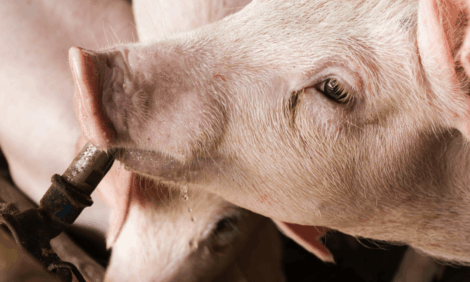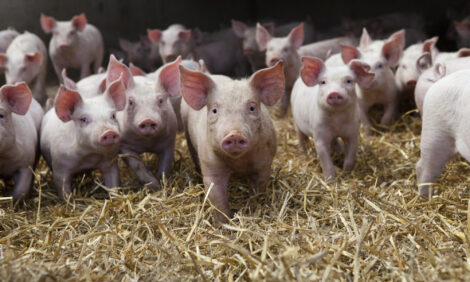



Impact of Pork Industry on Rural Communities: Community Perceptions of Environmental, Economic and Social Impacts of Livestock Production
By Wayne J. Caldwell and presented at the 2006 Banff Pork Seminar - Across Canada the continued viability of livestock production is increasingly dependent upon the willingness of the community to accept the industry as it continues to evolve. |
Introduction
Many legitimate concerns have arisen, including air and water quality, as well as social and economic concerns. These issues are particularly acute for the pork industry, which is often the focus of community antagonism.
Current and anticipated future trends suggest that as the rural community becomes increasingly urbanized, there will be an escalation of conflict between rural residents and the growing scale and concentration of the livestock industry. It is important to understand this conflict from a variety of perspectives. In the words of Carter and Owens (2000):
Understanding the context out of which complaints, criticisms and legal challenges against farmers are arising is a useful first step in learning how to prevent and resolve conflict.
This paper presents the results from a research project that studied several sizeable livestock operations (LO’s) and the perceptions of their neighbours in an attempt to better understand why conflicts arise and how to prevent them. This turns out to be a good news story – with the evidence pointing largely to livestock operations working towards living harmoniously with their neighbours.
Background
Growth in livestock production in rural Canada is at least partially dependent upon acceptance by local communities. Municipalities, reflecting demands from ratepayers, often consider the adoption of by-laws that in one form or another restrict livestock farming. The intensification of the livestock industry has lead to much debate. These types of attitudes reflect legitimate interests in air and water quality, but also reflect paranoia about livestock farming that is not always justified.
This paper presents the results of research that had the basic objective to develop information and identify approaches that are of critical importance to farmers, community members and local politicians as they establish policy and make decisions that determine the future of livestock production in Ontario.
The paper documents the relationship between livestock operations and neighbouring residents; it identifies those practices that contribute to a positive or negative relationship; and it identifies best practices used by municipalities in Ontario and elsewhere as they plan for the establishment of new livestock facilities.
The research results are based on information collected from 50 Ontario farms with more than 150 livestock units and 180 of their neighbours. The information was collected primarily through on-site interview and mailed in surveys.
The research provides the following information:
- It establishes a stronger understanding of the long-term relationship between the rural residents and the intensive livestock operations that can be utilized for informed opinions and understanding.
- It creates an educational foundation that promotes practices that cultivates good neighbour relations between intensive livestock operations and rural residents.
- It identifies approaches that can be used as a guideline for provincial and local level government when establishing policy and land use planning practices concerning intensive livestock operations in Ontario and Canada.
- It creates a basis for responses to NIMBYism and helps to understand and hopefully resolve conflict.
About the Farms
Fifty livestock operations from across Ontario were chosen – each with over 150 livestock units and each had been operating for at least 5 years at the current site. There were 21 hog, 10 dairy, 11 beef and 8 poultry farms studied.
Most of the operations are well established over a long period of time in the area, with 62% of the owners farming for over 25 years. In total, 80% of all businesses were originally formed over 25 years ago. In total, 70% of operators indicated that they ran their operation with a direct relative.
Contrary to negative media reports, these farmers live where they work. In fact, 92% live at the sites in question. Intensive livestock operators also contribute to the local economy with 84% of the operators spending over 70% of their expenses locally. Availability and a need for specialized equipment were the main reasons farmers gave for going outside the local area to purchase supplies.
As economic necessity dictated, these operations have expanded gradually. Overall, 78% of operators said that growing to their current size was a gradual expansion of the original operation over time. Almost half the farmers questioned expect to see their businesses expanding within the next five years.
Farm Management and Education
Overall the livestock farmers were well educated and informed about the role of their industry and its relationship to the environment. Key results include:
- 64% of farmers surveyed had some post-secondary education.
- Over 60% have taken courses to be certified in nutrient management, environmental farm plans and animal health (Figure 1).
- Over 80% of the farmers surveyed have been certified in their use of agricultural chemicals; the remainder rely on professional applicators.
- 48% of operators have updated knowledge and skills through outlets such as Ontario Agricultural Training Institute, Ontario Ministry Agriculture and Food and the University of Guelph. Some farmers have formed community groups to learn from each other.
Further Information
To continue reading this article, click here (PDF)
To view the full Banff Pork Listing, click here
To view the Banff Pork Seminar 2005 Proceedings, click here
Source: Paper presented during the 2006 Banff Pork Seminar Procedings









